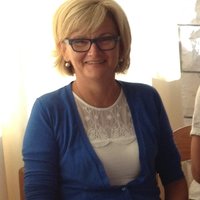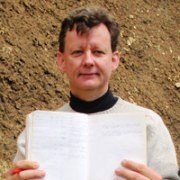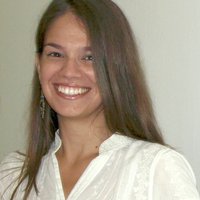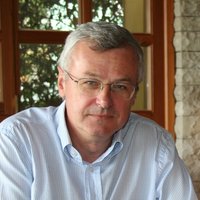THE TEAM
 Klara Buršić-Matijašić (Principal Investigator) was born in Pula (1959), and has graduated Archaeology and Italian Langauge and Literature from the University of Zagreb in 1982. She obtained her M. A. in 1997 at the same University with the thesis Typological-statistical elaboration of pottery from the Middle Bronze Age hill-fort Monkodonja). She obtained her PhD degree in 2001 from the University of Zagreb with the thesis Prehistoric hill-forts of Istria: topography, typology, chronology. From 1982 to 2001 she worked at the Archaeological Museum of Istria in Pula, where her main field of interest was the Istrian Bronze Age, and has since worked at the Juraj Dobrila University of Pula, in which she teaches Prehistory and Ancient History. Besides collecting topographical data and archaeological material by field walking over the whole peninsula, she took part in systematic and protective archaeological excavations in Croatia (Vis, Zadar), particularly in Istria (Pula, Burle near Medulin, Nezakcij, Červar, Gradac near Koromačno, Limska gradina, Škicini near Juršići, Sv. Martin above Lim, Monkodonja, Pećinovac near Kanfanar, Pupićina pećina near Vranja).
Klara Buršić-Matijašić (Principal Investigator) was born in Pula (1959), and has graduated Archaeology and Italian Langauge and Literature from the University of Zagreb in 1982. She obtained her M. A. in 1997 at the same University with the thesis Typological-statistical elaboration of pottery from the Middle Bronze Age hill-fort Monkodonja). She obtained her PhD degree in 2001 from the University of Zagreb with the thesis Prehistoric hill-forts of Istria: topography, typology, chronology. From 1982 to 2001 she worked at the Archaeological Museum of Istria in Pula, where her main field of interest was the Istrian Bronze Age, and has since worked at the Juraj Dobrila University of Pula, in which she teaches Prehistory and Ancient History. Besides collecting topographical data and archaeological material by field walking over the whole peninsula, she took part in systematic and protective archaeological excavations in Croatia (Vis, Zadar), particularly in Istria (Pula, Burle near Medulin, Nezakcij, Červar, Gradac near Koromačno, Limska gradina, Škicini near Juršići, Sv. Martin above Lim, Monkodonja, Pećinovac near Kanfanar, Pupićina pećina near Vranja).
 Giovanni Boschian was born in Trieste (1959). He graduated in Geological Sciences from the University of Trieste in 1985 with a thesis in Earth Physics “Recent Crustal Deformations in the Eastern Alpine Ridge”, after which he worked as consultant archaeologist and geoarchaeologist in various projects, mainly state archaeological heritage offices and universities. Since 1990 he works at the University of Pisa, first at the Department of Archaeological Sciences (1990-2010) as research technician, research engineer, researcher, all the time teaching courses on Geoarchaeology. Since 2011 he is Associate Professor at the Department of Biology, University of Pisa, teaching courses on environmental archaeology and geoarchaeology. He also taught at the Ca’ Foscari University of Venice, and University of Nice. He was principal investigator on several projects, including Visogliano rock-shelter, Caverna degli Orsi, Rock shelter near the Eremo di S. Bartolomeo a Maiella, Grotta degli Zingari. His current research is focused on human-environment interaction in The Cradle of Humankind (South Africa), and across the Mediterranean.
Giovanni Boschian was born in Trieste (1959). He graduated in Geological Sciences from the University of Trieste in 1985 with a thesis in Earth Physics “Recent Crustal Deformations in the Eastern Alpine Ridge”, after which he worked as consultant archaeologist and geoarchaeologist in various projects, mainly state archaeological heritage offices and universities. Since 1990 he works at the University of Pisa, first at the Department of Archaeological Sciences (1990-2010) as research technician, research engineer, researcher, all the time teaching courses on Geoarchaeology. Since 2011 he is Associate Professor at the Department of Biology, University of Pisa, teaching courses on environmental archaeology and geoarchaeology. He also taught at the Ca’ Foscari University of Venice, and University of Nice. He was principal investigator on several projects, including Visogliano rock-shelter, Caverna degli Orsi, Rock shelter near the Eremo di S. Bartolomeo a Maiella, Grotta degli Zingari. His current research is focused on human-environment interaction in The Cradle of Humankind (South Africa), and across the Mediterranean.
 Davor Bulić was born in Pula (1979), and he graduated in Archaeology and History at the University of Zadar 2006. He worked at the Archaeological Museum of Istria in Pula for two years. During this period he led archaeological researches of Roman sites in southern Istria, in Fažana and around Pula. Since 2008 he is employed as a research assistant at the Juraj Dobrila University of Pula, History Subdepartment within the Department of Humanities. As a Research Assistant he was team member of the research project “Population and Economy of Istria from the End of the Prehistory to the Byzantine Period”, under the leadership of Dr. Robert Matijašić. At the University of Zadar he obtained his PhD in 2015 with the thesis “The Roman Rural Architecture of Istria in the Context of Economic and Social History”.
Davor Bulić was born in Pula (1979), and he graduated in Archaeology and History at the University of Zadar 2006. He worked at the Archaeological Museum of Istria in Pula for two years. During this period he led archaeological researches of Roman sites in southern Istria, in Fažana and around Pula. Since 2008 he is employed as a research assistant at the Juraj Dobrila University of Pula, History Subdepartment within the Department of Humanities. As a Research Assistant he was team member of the research project “Population and Economy of Istria from the End of the Prehistory to the Byzantine Period”, under the leadership of Dr. Robert Matijašić. At the University of Zadar he obtained his PhD in 2015 with the thesis “The Roman Rural Architecture of Istria in the Context of Economic and Social History”.
 Katarina Gerometta was born in Pula (1982), has achieved three M. A.’s: History of Art and Italian Language and Literature, and Archaeology (2009) from the University of Zagreb, and is now PhD student in Archaeology at the same University. She has worked briefly as an Italian Language teacher (2003-2005), and since 2010 she has been employed by the Juraj Dobrila University of Pula as Research Assistant (Prehistory of Croatia, History of Civilizations, History of Mesopotamia). She attended soil micromorphology training courses and workshops in Pisa, London, Tübingen, and Cambridge. Her research interests are in Geoarchaeology, Archaeological Soil Micromorphology, Prehistory, Landscape Archaeology, Stratigraphy. From 2004 she participated in archaeological excavations on more than 30 sites in Croatia, Italy, France, Greece, Serbia, Bosnia and Herzegovina and conducted geoarchaeological sampling and research in several caves, rock shelters, and open-air sites in Croatia and abroad.
Katarina Gerometta was born in Pula (1982), has achieved three M. A.’s: History of Art and Italian Language and Literature, and Archaeology (2009) from the University of Zagreb, and is now PhD student in Archaeology at the same University. She has worked briefly as an Italian Language teacher (2003-2005), and since 2010 she has been employed by the Juraj Dobrila University of Pula as Research Assistant (Prehistory of Croatia, History of Civilizations, History of Mesopotamia). She attended soil micromorphology training courses and workshops in Pisa, London, Tübingen, and Cambridge. Her research interests are in Geoarchaeology, Archaeological Soil Micromorphology, Prehistory, Landscape Archaeology, Stratigraphy. From 2004 she participated in archaeological excavations on more than 30 sites in Croatia, Italy, France, Greece, Serbia, Bosnia and Herzegovina and conducted geoarchaeological sampling and research in several caves, rock shelters, and open-air sites in Croatia and abroad.
 Robert Matijašić was born in Pula (1957), graduated in Archaeology (A-major) and English Language and Literature (B-minor) at the University of Zagreb in 1979, worked in the Archaeological Museum of Istria (1979-1996), as curator in the Classical Department. He has been member of excavation teams in Sesvete near Zagreb, Vinkovci, Zadar, Medulin, Červar, Rim near Roč, and Pula. He has lead teams of excavators of the ancient necropolis (Campus Martius) and roman public architecture in Pula (Forum). He earned his M. A. from the University of Zagreb in 1985, and his PhD from the same University in 1994. After being Director of the Archaeological Museum of Istria in Pula (1991-1994) he left the Museum in 1996 and has since worked at the Juraj Dobrila University of Pula, at which he teaches Ancient History. He also taught at the University of Rijeka, University of Zagreb, University of Padua. He was several times awarded short fellowships (one or two months) at the University of Padua, Ecole Francaise de Rome, University of Macerata, University of Oxford, University of Bordeaux. He was principal investigator on several national and international projects.
Robert Matijašić was born in Pula (1957), graduated in Archaeology (A-major) and English Language and Literature (B-minor) at the University of Zagreb in 1979, worked in the Archaeological Museum of Istria (1979-1996), as curator in the Classical Department. He has been member of excavation teams in Sesvete near Zagreb, Vinkovci, Zadar, Medulin, Červar, Rim near Roč, and Pula. He has lead teams of excavators of the ancient necropolis (Campus Martius) and roman public architecture in Pula (Forum). He earned his M. A. from the University of Zagreb in 1985, and his PhD from the same University in 1994. After being Director of the Archaeological Museum of Istria in Pula (1991-1994) he left the Museum in 1996 and has since worked at the Juraj Dobrila University of Pula, at which he teaches Ancient History. He also taught at the University of Rijeka, University of Zagreb, University of Padua. He was several times awarded short fellowships (one or two months) at the University of Padua, Ecole Francaise de Rome, University of Macerata, University of Oxford, University of Bordeaux. He was principal investigator on several national and international projects.
 Maša Sakara Sučević has graduated from the University of Ljubljana in Archaeology in 1998, earned her M. A. degree in Prehistoric archaeology from the University of Ljubljana (Slovenia) in 2003, with the thesis “Kaštelir pri Novi vasi, Brtonigla – An example of material culture of the Late Bronze Age and Iron Age in Istria”. She earned her PhD degree at the University of Primorska in Koper (Slovenia) also in Prehistoric archaeology in 2012, with the thesis “Prehistoric pottery between the Muggia Bay and Mirna Valley. She has worked as Young researcher at the National Museum of Slovenia and at the University of Ljubljana (1998-2003). She has worked as an Assistant and Senior Assistant at the University of Primorska (2003- 2011), and has since 2010 been employed at the Regional Museum of Koper, as a curator for archaeology. She continues to collaborate with the University of Primorska as an external Senior Assistant.
Maša Sakara Sučević has graduated from the University of Ljubljana in Archaeology in 1998, earned her M. A. degree in Prehistoric archaeology from the University of Ljubljana (Slovenia) in 2003, with the thesis “Kaštelir pri Novi vasi, Brtonigla – An example of material culture of the Late Bronze Age and Iron Age in Istria”. She earned her PhD degree at the University of Primorska in Koper (Slovenia) also in Prehistoric archaeology in 2012, with the thesis “Prehistoric pottery between the Muggia Bay and Mirna Valley. She has worked as Young researcher at the National Museum of Slovenia and at the University of Ljubljana (1998-2003). She has worked as an Assistant and Senior Assistant at the University of Primorska (2003- 2011), and has since 2010 been employed at the Regional Museum of Koper, as a curator for archaeology. She continues to collaborate with the University of Primorska as an external Senior Assistant.
 Jana Škrgulja was born in Ljubljana (1980), and she graduated in Archaeology at the University of Zagreb in 2013. In 2003/04 she participated in the archaeological excavations of Bribirska Glavica and 2005/06 started to study Archaeology and Comparative Literature at the University of Zagreb. During this period from 2003 to present she worked at more than 20 archaeological excavations of prehistoric to middle ages sites in Croatia, mostly for the Department of Archaeology, University of Zagreb, Archaeological museum of Zagreb and Ministry of Culture – Conservation Department in Šibenik (Gardun, Lobor, Lasinja, Osor, Kornati, Zmajevac,Vučedol,...). In 2013 she became secretary of the Croatian Archaeological Society. She is attending the PhD program of Medieval Studies (Faculty of Humanities and Social Sciences, University of Zagreb) and started to work as a Teaching Associate at the Department of Archaeology, University of Zagreb (Medieval Archaeology).
Jana Škrgulja was born in Ljubljana (1980), and she graduated in Archaeology at the University of Zagreb in 2013. In 2003/04 she participated in the archaeological excavations of Bribirska Glavica and 2005/06 started to study Archaeology and Comparative Literature at the University of Zagreb. During this period from 2003 to present she worked at more than 20 archaeological excavations of prehistoric to middle ages sites in Croatia, mostly for the Department of Archaeology, University of Zagreb, Archaeological museum of Zagreb and Ministry of Culture – Conservation Department in Šibenik (Gardun, Lobor, Lasinja, Osor, Kornati, Zmajevac,Vučedol,...). In 2013 she became secretary of the Croatian Archaeological Society. She is attending the PhD program of Medieval Studies (Faculty of Humanities and Social Sciences, University of Zagreb) and started to work as a Teaching Associate at the Department of Archaeology, University of Zagreb (Medieval Archaeology).
 Sandra Šoštarić was born in Zagreb in 1986; in 2012 she earned an MA in Prehistoric Archaeology with a focus on bioarchaeology from the University of Zagreb; with her interests primarily being health and disease of prehistoric populations, she attended various international short courses on the subject of bioarchaeology, forensic anthropology and archaeological science. After gaining archaeological field experience on several prehistoric sites in Croatia (Bapska – Gradac, Brdovec, Vela Spila on the Island of Korčula), she developed an interest in the project management aspect of fieldwork and research, which led her to earn her second her second MA in Heritage Management from University of Kent and Athens University of Economics and Business. Sandra currently works for the International Commission on Missing Persons as an osteologist on identification of human remains from the Bosnian 1992-1995 conflict.
Sandra Šoštarić was born in Zagreb in 1986; in 2012 she earned an MA in Prehistoric Archaeology with a focus on bioarchaeology from the University of Zagreb; with her interests primarily being health and disease of prehistoric populations, she attended various international short courses on the subject of bioarchaeology, forensic anthropology and archaeological science. After gaining archaeological field experience on several prehistoric sites in Croatia (Bapska – Gradac, Brdovec, Vela Spila on the Island of Korčula), she developed an interest in the project management aspect of fieldwork and research, which led her to earn her second her second MA in Heritage Management from University of Kent and Athens University of Economics and Business. Sandra currently works for the International Commission on Missing Persons as an osteologist on identification of human remains from the Bosnian 1992-1995 conflict.

